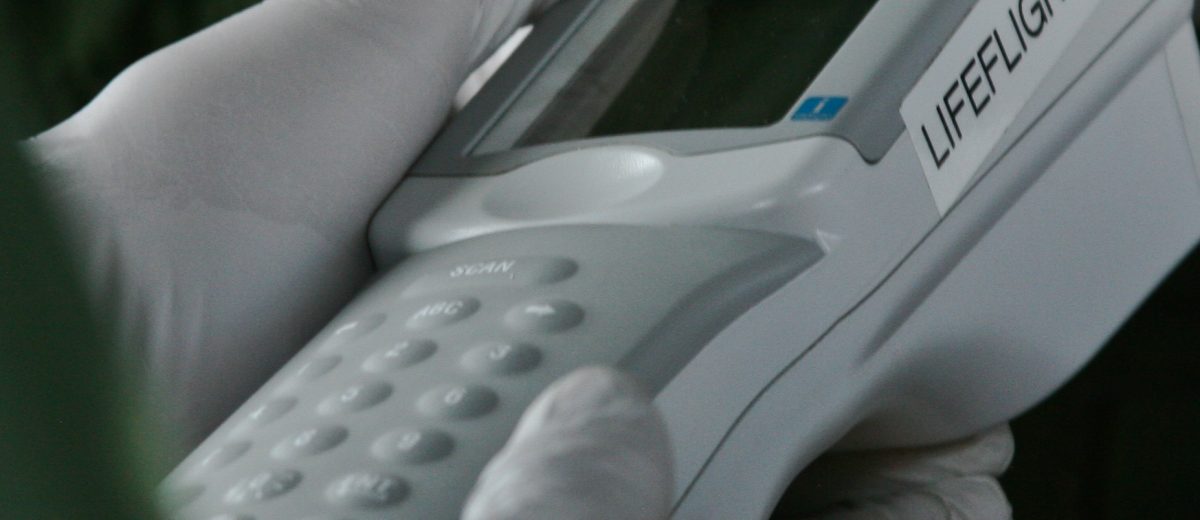Advanced medical technology is critical for LifeFlight patients
Like most aspects of society, healthcare is deeply affected by today’s rapidly changing technology. The same magic that powers our smart phones also drives advancements in medical equipment, and LifeFlight has seen a great deal of change over the last two decades.
Clinical knowledge is growing at a rate we’ve never seen, with hundreds of new treatments being developed every year. Technology that used to be found only in hospitals is now mobile, and often something you can hold in your hand.
When LifeFlight began, it was well-known how important time is for trauma victims. “The golden hour” is often used to describe how a patient’s chance for survival and recovery begins to dwindle in the minutes after an injury. Today, we understand how critical that first hour is for stroke and cardiac patients, too.
LifeFlight has always been a critical care service, taking care of the most seriously ill and injured patients in Maine. From the beginning, the team has carried a special kit of equipment and supplies, including universal donor blood, advanced ventilators, infusion pumps and monitors. With its statewide reach and its distinct critical care mission, LifeFlight is in a unique position to implement new technology and best practices in ways that benefit thousands of Mainers every year.
In 2005, LifeFlight added a bedside laboratory to its tool kit. This small and convenient piece of equipment, called an i-STAT, saves valuable time, allowing the medical team to perform blood tests while in flight. These tests provide important feedback about the patient’s condition, giving the crew an opportunity to adjust treatment during the transport.
A compact, mobile intra-aortic balloon pump was added to flight operations in 2007. Used to stabilize and manage patients suffering from serious heart disease, balloon pumps help restore the balance between the supply of oxygen-rich blood the heart receives from the coronary arteries, and the amount of oxygen the heart needs to pump.
In 2013, LifeFlight began using video laryngoscopes. Laryngoscopes are typically used when a patient needs a breathing tube placed. This is a difficult procedure under ideal conditions. For patients with severe trauma, the complexity of the procedure increases dramatically. The video laryngoscope gives the flight nurse or paramedic a much clearer picture of the patient’s airway, leading to safer and more reliable intubations.
Today, LifeFlight crews carry more than $500,000 of specialized medical equipment on each transport, transforming the aircraft into flying intensive care units. Most of this equipment has been purchased with support from our donors.
Securing an airway is a critical procedure for many of our patients, and we carry equipment that ensures we do it safely and reliably. I recently transported a trauma patient who was hypothermic and whose jaw was clenched shut. Without the video laryngoscope, I wouldn’t have been able to secure the patient’s airway and he may not have survived the transport.
—David Rudolph, Flight Paramedic
